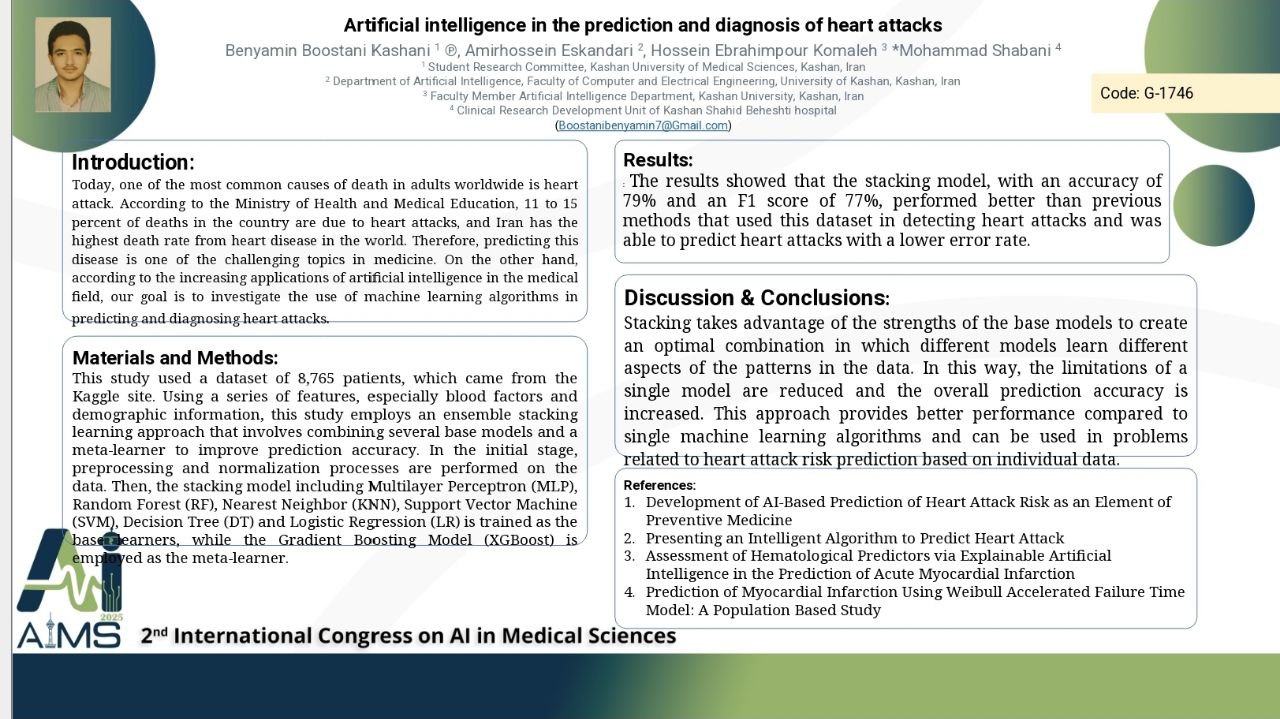Artificial intelligence in the prediction and diagnosis of heart attacks
Code: G-1746
Authors: Benyamin Boostani Kashani ℗, Amirhossein Eskandari, Hossein Ebrahimpour Komaleh *, Mohammad Shabani
Schedule: Not Scheduled!
Tag: Biomedical Signal Processing
Download: Download Poster
Abstract:
Abstract
Introduction: Today, one of the most common causes of death in adults worldwide is heart attack. According to the Ministry of Health and Medical Education, 11 to 15 percent of deaths in the country are due to heart attacks, and Iran has the highest death rate from heart disease in the world. Therefore, predicting this disease is one of the challenging topics in medicine. On the other hand, according to the increasing applications of artificial intelligence in the medical field, our goal is to investigate the use of machine learning algorithms in predicting and diagnosing heart attacks. Method: This study used a dataset of 8,765 patients, which came from the Kaggle site. Using a series of features, especially blood factors and demographic information, this study employs an ensemble stacking learning approach that involves combining several base models and a meta-learner to improve prediction accuracy. In the initial stage, preprocessing and normalization processes are performed on the data. Then, the stacking model including Multilayer Perceptron (MLP), Random Forest (RF), Nearest Neighbor (KNN), Support Vector Machine (SVM), Decision Tree (DT) and Logistic Regression (LR) is trained as the base learners, while the Gradient Boosting Model (XGBoost) is employed as the meta-learner. Results: The results showed that the stacking model, with an accuracy of 79% and an F1 score of 77%, performed better than previous methods that used this dataset in detecting heart attacks and was able to predict heart attacks with a lower error rate. Conclusion: Stacking takes advantage of the strengths of the base models to create an optimal combination in which different models learn different aspects of the patterns in the data. In this way, the limitations of a single model are reduced and the overall prediction accuracy is increased. This approach provides better performance compared to single machine learning algorithms and can be used in problems related to heart attack risk prediction based on individual data.
Keywords
Artificial Intelligence, Heart Attack, Prediction, Machinelearning
